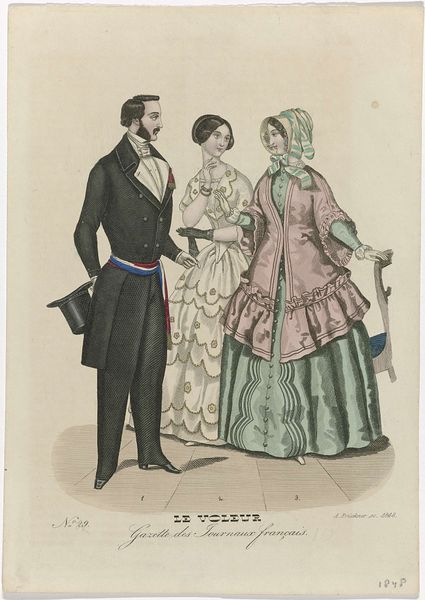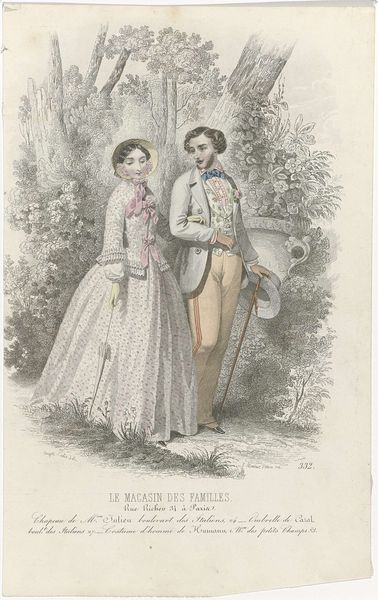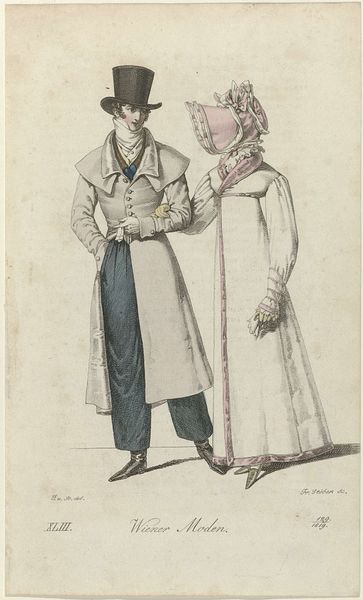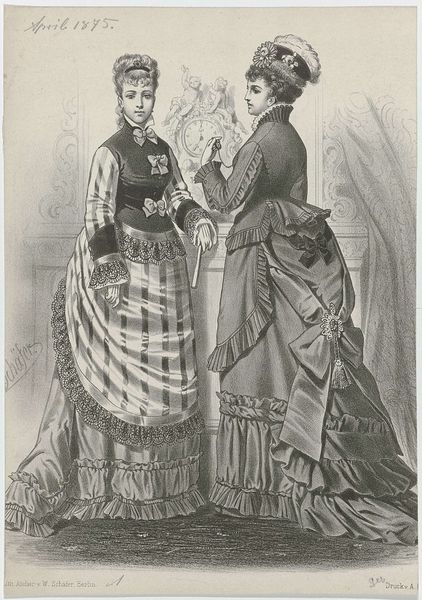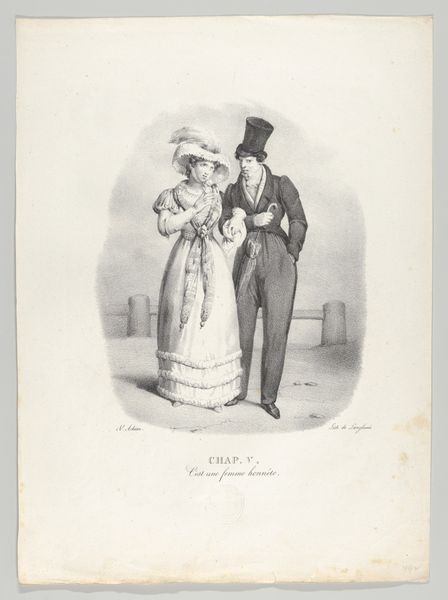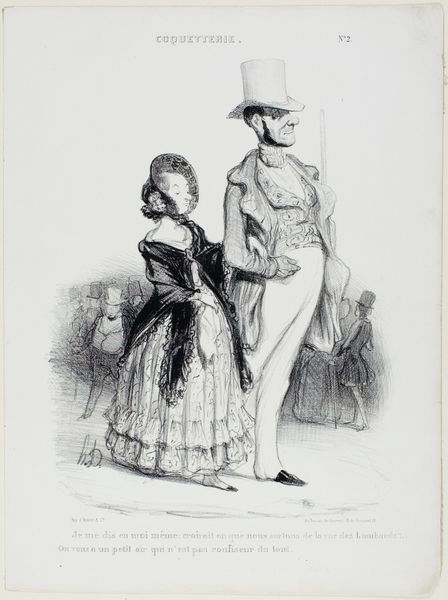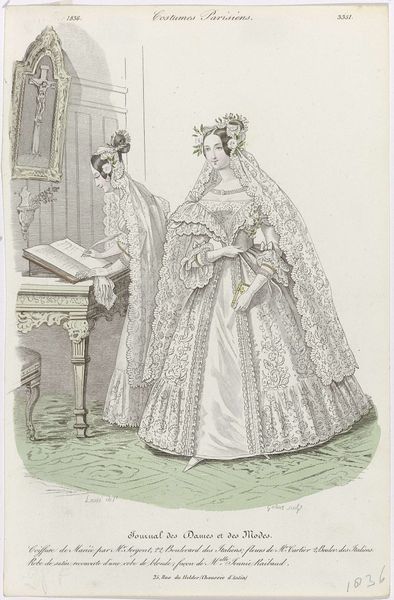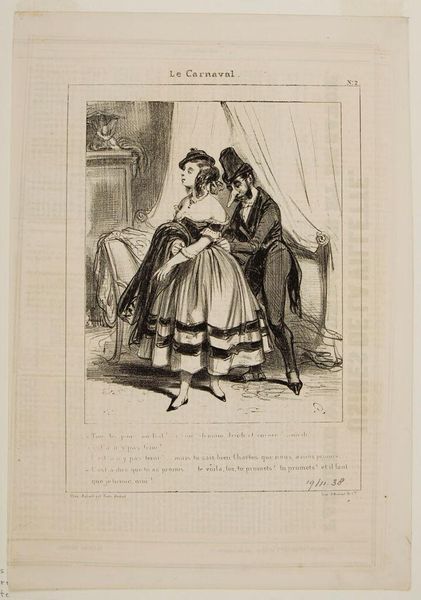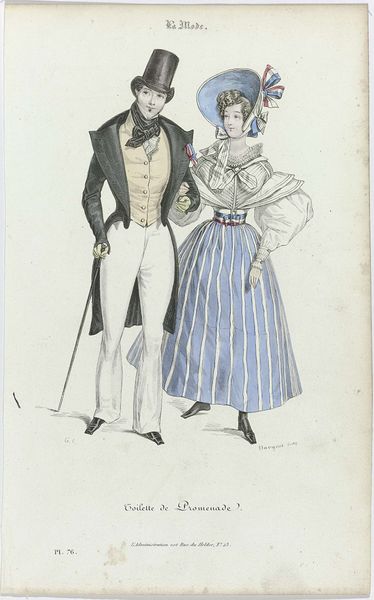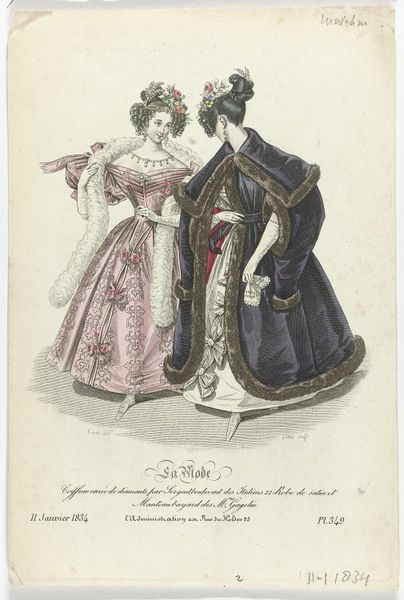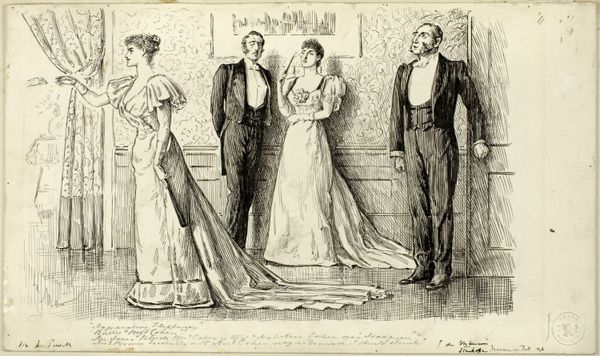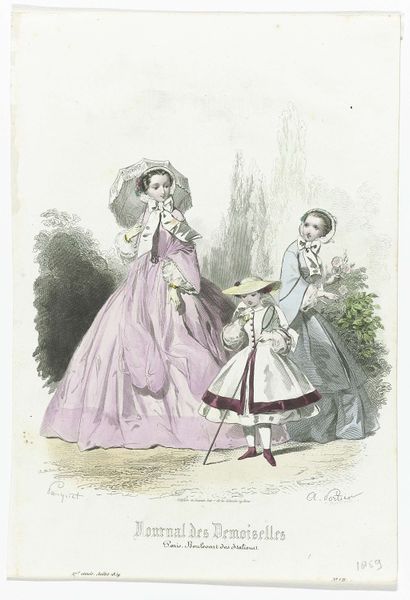
drawing, print, engraving
#
portrait
#
drawing
# print
#
pencil sketch
#
old engraving style
#
pencil work
#
genre-painting
#
engraving
Dimensions: height 277 mm, width 178 mm
Copyright: Rijks Museum: Open Domain
Curator: What strikes me immediately is the quiet formality, yet a slight sense of the absurd. Editor: Yes, let’s contextualize this piece. This is a print titled "O Civilisador, ca. 1859, 3o Anno, No. 16," made around 1859 by Henrique Barreto. It appears to be an engraving. The title itself, "The Civilizer," carries a heavy ideological weight, doesn't it? Curator: Indeed. That title paired with their stern faces makes me wonder, what kind of civilization are we talking about here? The details in the woman’s dress are captivating; each fold, each trim… they seem so purposefully placed, but feel slightly artificial. Editor: Think about the 19th century and Brazil's position within a global network of power. The artist, Barreto, was actively involved in the theater. He also had a printing shop in Rio. Images like this are crucial for understanding how the elites saw themselves. The dress, the tailcoat, the letter each prop becomes symbolic of progress. The whole scene has a rigid structure. Curator: I sense an unease or a discomfort, in the rendering and the setting. Are these the true bearers of civilization, or is Barreto slyly suggesting something else? The shadows are too harsh! Editor: The inclusion of certain groups and the exclusion of others, based on race, class, and gender is central. Consider also the power dynamics embedded in the act of portraying oneself as a "civilizer." It’s deeply entrenched in colonialism and patriarchy. Curator: It feels very posed, almost like actors on a stage set; as though the "civilizing" influence that they might exert will play out in a highly controlled way. It makes one want to disrupt things a bit, to deconstruct such rigid presentations. Editor: This artwork makes visible certain social performances and structures of authority that still impact us today, so it serves as an enduring piece of cultural commentary. Curator: Agreed. Its power lies precisely in this quiet yet forceful statement about control and its impact, leaving us to question how "civilized" it all truly is.
Comments
No comments
Be the first to comment and join the conversation on the ultimate creative platform.
